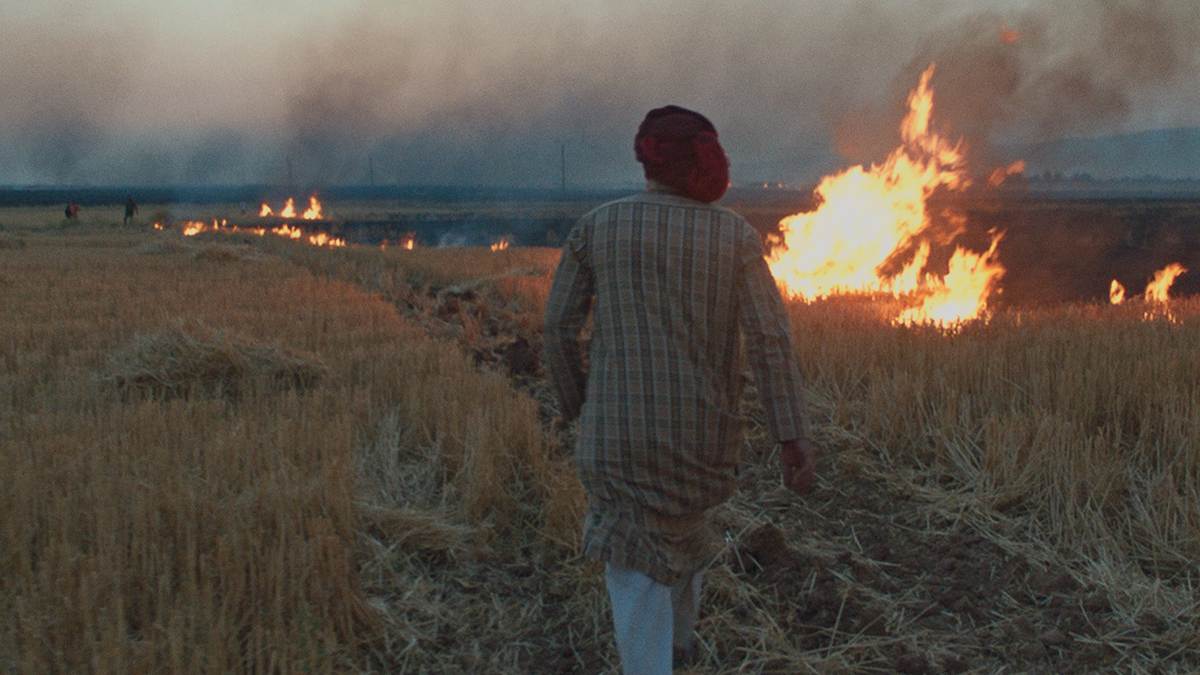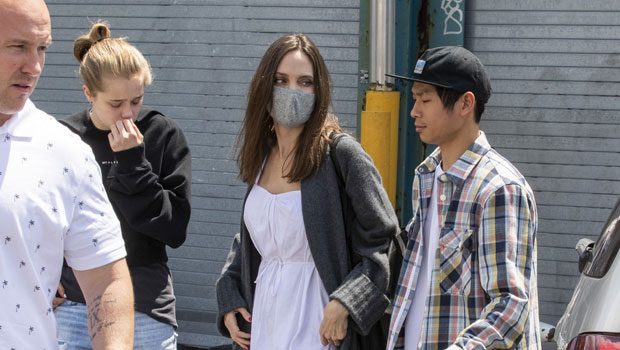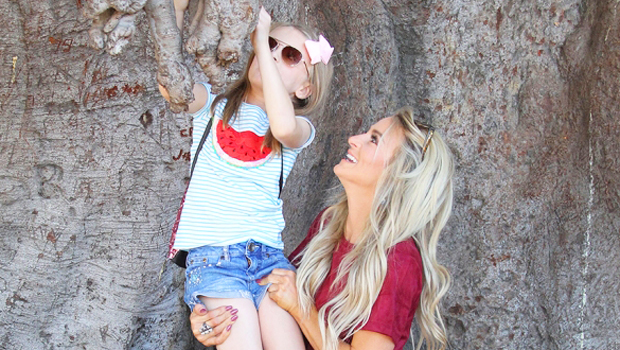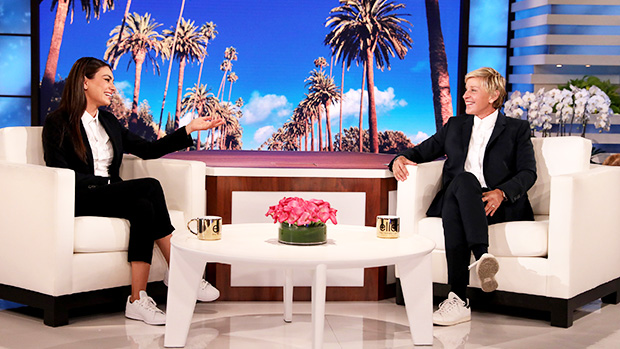Hot Docs 2022 Women Directors: Meet Zaynê Akyol – “Rojek”
Zaynê Akyol’s first feature documentary, “Gulîstan, Land of Roses,” was selected by 80 international film festivals, earning 50 nominations and winning 12 awards, including the prestigious Doc Alliance Award given at the Locarno Film Festival. In her free time,...

Zaynê Akyol’s first feature documentary, “Gulîstan, Land of Roses,” was selected by 80 international film festivals, earning 50 nominations and winning 12 awards, including the prestigious Doc Alliance Award given at the Locarno Film Festival. In her free time, Akyol is a photographer whose exhibitions have been widely seen. “Rojek” is her second documentary.
“Rojek” is screening at the 2022 Hot Docs Canadian International Film Festival, which is taking place April 28-May 8. Find more information on the fest’s website.
W&H: Describe the film for us in your own words.
ZA: “Rojek” encounters members of the Islamic State, as well as their wives detained in prison camps, who are from all over the world sharing a common dream: establishing a caliphate. The film is an attempt to understand their Muslim fundamentalist beliefs, while recounting the rise and fall of the Islamic State (ISIS) through their personal stories.
These intimate conversations are the thread along which the documentary evolves, as it is intertwined with various sequences depicting current, post-war Syrian Kurdistan. Each chapter is going over a specific period and theme in order to access a point of view that has rarely been heard before.
“Rojek” offers an intimate gaze at an unknown reality, right after armed combat, testifying about pivotal moments experienced by the actors of this conflict. Thus, the film tackles how this ideological war is only the beginning of a new kind of threat.
W&H: What drew you to this story?
ZA: I immigrated to Canada from Turkey at the age of four with my family. Then, once in Canada, my parents were going to the Kurdish Community Center, which was very politicized in the ’90s. It was also where I met my babysitter Gulîstan, who was 15 years older than me. I considered her as my big sister. I loved and admired her. One day she disappeared from my life, and I learned that she had joined the Kurdish guerrillas, the Kurdistan Workers’ Party, known as the PKK. Much later, I learned that she had died in battle in 2000.
It is only after making my first film, “Gulîstan, Land of Roses,” that I could understand Gulîstan’s motivations by gaining the Kurdish army’s trust – whether the PKK, YPG, YPJ or SDF, all ideologically interconnected – I dove into their world. Incidentally, the filming of this documentary coincided with Daesh’s (ISIS) first strikes on the region. Hence, I was there to witness the outbreak of the conflict, leading to an endless war between the Kurds and ISIS.
This first film proposes an immersion into the world of female fighters. Without any filter, I reveal the most intimate moments of their lives as guerrillas in this area torn by war. On the screen, no sensationalistic image is ever shown. Instead, we get chronicles of their daily life, told in a confessional tone where the heroes are Middle Eastern women. As they are also represented in “Rojek” not only in armies, but as authority figures, like the judge in the courtroom, police officers at the checkpoints, etc.
The making of these two films is strongly interconnected, one is the continuation of the other.
This new project, “Rojek,” is the logical sequel to my first film and it revolves around post-war life, featuring a series of conversations with jihadists and their wives currently in Syrian Kurdistan. I speak with them to understand where they come from, the reasons behind their acts, and the mechanisms in place within ISIS. I establish a dialogue with those who had a hand in the creation of the Islamic State. With prison cells and prison camps as a backdrop, it delves into the lives of these people who came from all around the world, who driven by their desire to create a society based on an ultra-fundamentalist view of Islam.
The film’s narrative structure revolves around filmed interviews where these men and women retrace chronologically the beginning, the glory days, and the end of ISIS, as they lived it from the inside. Throughout, we spend some time on their personal stories of enrollment, their childhood, their family, their religious beliefs, their lives before and with ISIS, their role within the organization, etc.
I went beyond the borders I couldn’t cross with my first film. Getting to hear that point of view, to analyze it and try to wrap my head around it, was an extremely challenging experience, as it is the exact opposite of where my values stand, and also because most of the women in my previous film died while fighting ISIS.
It was a very emotional film for me to make. That is why I went to meet the Other, this enemy of the world, to listen and try to understand him. Of course, such a tête-à-tête would never have been possible were it not for the pretext of filmmaking.
It has granted me access I could never have got otherwise. Going and meeting with ISIS is not something one does without good reason. Filmmaking opens doors and allows me to not only capture historic events, but also to be a privileged witness of the world and present it back in a personal manner. Directing this type of film demands a lot of patience and a tremendous amount of work, but the process is highly rewarding. It made me grow as a human being, taught me a lot, and confronted me with my own beliefs.
When filming “Rojek,” I spent four months in Syrian Kurdistan, visited six prisons, and interviewed 50 people, 30 of whom were jihadists and 20 jihadists’ wives. These people were all arrested in the collapse of the Islamic State. Citizens from everywhere joined that extremist organization and therefore it is not only a regional problem anymore, but an international one.
The preferential access I have obtained — a clearance shared only by Secret Services — along with the [opportunity] to attend some of their trials, gives nuance to the film. Coming out of a debut film about Middle Eastern female fighters in a time of war, I dove into this portrait of Syrian Kurdistan in the aftermath of its most devastating events, which pits progressive points of view (the Syrian Democratic Forces’) against extremist ones (the ISIS prisoners’).
As you can see, “Rojek” is a very ambitious project that required years of preparation and that had many challenges along the way: access and permissions, security, translations, unofficial borders passing, war zones, etc. And that’s just to name a few.
“Rojek” is the realization of all my thoughts on the subject accumulated over the ten years of going back and forth to Iraqi Kurdistan and Syrian Kurdistan. It is a long journey that led me to have access to ISIS jihadist convicts. Ten years of hard work made it possible. Indeed, my previous film, “Gulîstan, Land of Roses,” exposes the life of the guerrillas who fought against the Islamic State. It was therefore about “the war,” whereas “Rojek” takes place more in the “post-war period,” questioning the actors who triggered, participated in, and maintained this chaos. This new project is in a way the logical continuation of that first film, as it turns the camera on the other side, this time focusing on the jihadists.
These are two films offering an intimate look at an unknown reality, positioning themselves at different stages of armed combat, but both testifying to pivotal moments experienced by the actors of this conflict which will mark the rest of the world.
W&H: What do you want people to think about after they watch the film?
ZA: By meeting these people, “Rojek” helps us understand the basis on which these extremists commit such acts. Through this attempt to understand their logic, we stop seeing them as dangerous lunatics, but rather as indoctrinated people. From there, as with any indoctrination, the only way to imagine solutions is to understand what it is.
So, what exactly is the ideology of ISIS? Who are its members? What are their personal stories and views? Why do they fight and, more importantly, why do they consider everyone else “miscreants” who deserve to die? These are the topics we address in this film, while breaking down the structure of ISIS — how it works, the different positions, its hierarchy, its organization, etc. — as well as the key events of this war as seen by those who lived it from the inside.
These conversations mainly answer these personal questions and necessary explanations about ISIS. In short, we attempt to understand the Other and offer a rare dialogue with the most dangerous terrorists of the last decade and what remains of them.
I believe that with “Rojek,” a channel of communication is created, one that would otherwise be impossible between these people and the viewer. Hearing the words of jihadists in interviews helps us understand the magnitude of the problem, and it’s also a way to move forward and think about lasting solutions that will impact future generations.
News about ISIS is part of our daily lives, but we all still struggle to grasp the ins and outs of it. “Rojek” could help clarify some of the misunderstandings and initiate a dialogue. Even if it is difficult, it is probably the best way to move forward as a society.
W&H: What was the biggest challenge in making the film?
ZA: Everything in making this film was a challenge from A to Z. I am glad I didn’t know it when I started because I probably wouldn’t have continued. From finding the right producers and team for the project; to going to a war zone alone without any assistance; to having accesses and permissions to film in jails; to coming back home with the rushes; to finding the right story to tell in the editing room, etc. I could go on for pages about this. Making a film about members of the Islamic State is not something that is easily done. Because not only did I have the challenges of making a film, which are already a lot, but I also had the challenges that come with the subject of the film.
Also, one of the big challenges I face when making films is to satisfy myself. I have a compulsion to constantly push my own limits and ideas, which makes it hard for me to enjoy the process.
W&H: How did you get your film funded? Share some insights into how you got the film made.
ZA: The film is produced by the production company Metafilms and producers Audrey-Ann Dupuis-Pierre, Sylvain Corbeil, and myself. We are all dedicated to the production of auteur films.
We received financial support mainly from Canadian institutions, namely Telefilm Canada, SODEC, Conseil des arts et des lettres du Québec (CALQ), Hot Docs Ted Rogers Fund, ACIC (from National Film Board of Canada), and Post-moderne. We have also received international funding from the Gucci Tribeca Documentary Fund and Cinereach in the United States, as well as from the Région Île-de-France Film Fund.
W&H: What inspired you to become a filmmaker?
ZA: I never really wanted to be a director It was an accident. In high school, I was pretty good at science and math. In CEGEP, a sort of pre-university in Quebec right after high school, I wanted to try something totally different, and I thought, “Why not filmmaking for a semester?” I got hooked and haven’t stopped since.
W&H: What’s the best and worst advice you’ve received?
ZA Best advice: Make a film you would like to watch.
My mind doesn’t focus on negativity, so I can’t remember any bad advice.
W&H: What advice do you have for other women directors?
ZA: I recommend making films that are important to you, approaching people you think are unapproachable, and creating a team you trust. Finally, I believe that hard work is what gets you there — talent is just a plus. For me, all these things are crucial to making films.
W&H: Name your favorite woman-directed film and why.
ZA: Recently I met the multidisciplinary artist Shirin Neshat. She is a great photographer, but also an accomplished director. I was invited to have a creative conversation with her at the Museum of Contemporary Art (MOCA) in Toronto. I was completely fascinated by her singular approach, her authenticity and her background. I was introduced to an impressive woman who communicates her way of seeing the world without compromising who she is.
W&H: How are you adjusting to life during the COVID-19 pandemic? Are you keeping creative, and if so, how?
ZA: A few months after we finished the filming of “Rojek” and came back to Montreal, the pandemic hit the world. We were lucky because we started post-production during that time, and we just finished a few weeks ago. This last phase of the film was the longest, it took exactly two years because of the amount of material and the richness of the subject, if I can say so.
W&H: The film industry has a long history of underrepresenting people of color onscreen and behind the scenes and reinforcing — and creating — negative stereotypes. What actions do you think need to be taken to make Hollywood and/or the doc world more inclusive?
ZA: This is an important issue that has much deeper roots than simply taking actions that focus solely on inclusion. As a woman with an immigrant background, I have, for example, experienced racism both in school and in my work environment. I will always remember that, even in university, I was being told by my classmates, who were seeing that I was doing well and that I was given as an example by my teachers, that I was favored because I am an immigrant, but that in reality I had no talent. This is what we need to address first, ignorance, even among people who appear to be educated.
Out of 30 students, I was the only immigrant; this means that there are even fewer professionals in the film industry. One of the simple solutions to adopt could be to require that the percentahe of visible minorities in society be the same in the artistic world. But to be frank, the problem has deeper roots, and it is those that need to be addressed. However, these may take time, so the easiest thing to do at this point has to be systemic in some way until we reach equality.

 KickT
KickT 






























